

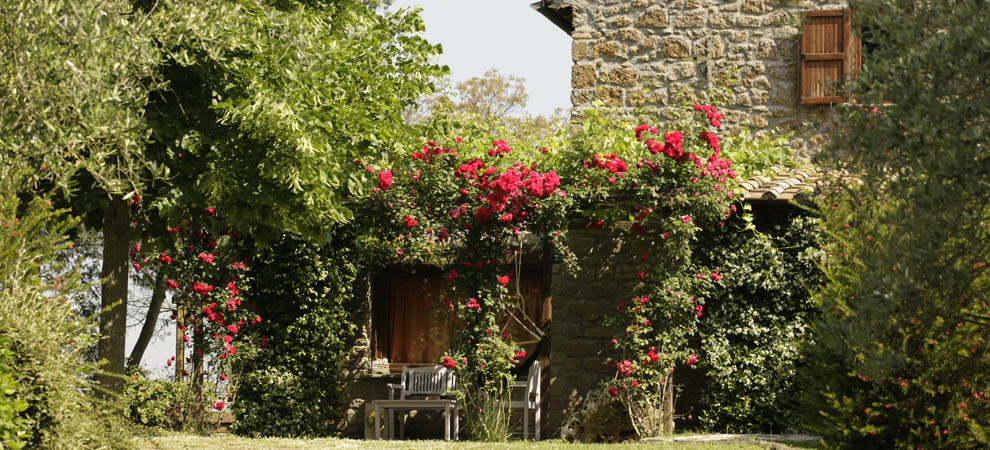
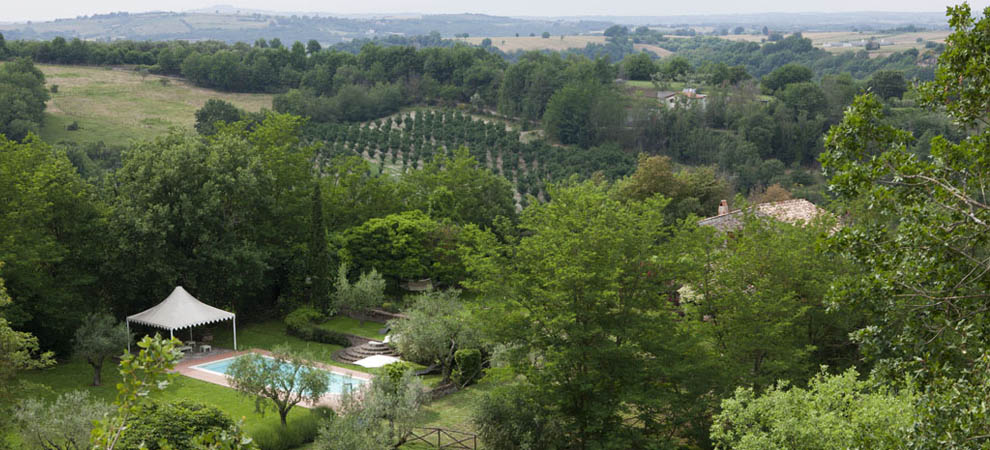
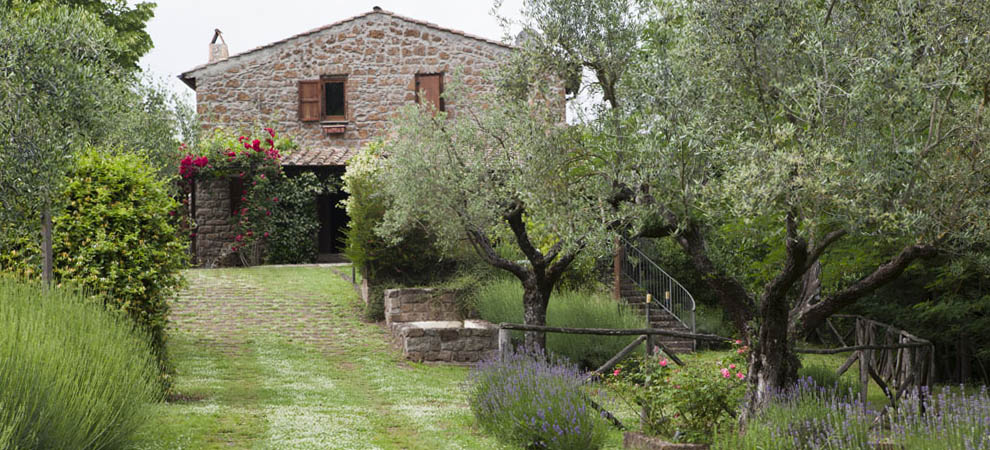







Situated at the foot of the Cimini Mountains, in the green-cloaked Vezza Valley is Vitorchiano, a small and picturesque village. It is a place where time no longer exists, taking us back in history to feel deeply at one with the land we tread and the sky above us, a place arousing reflection and expectations permeating daily-life with spirituality. It is a ‘place of the soul’, to return to as a safe port every time you feel nostalgic for it. Finally, it is a place for prayer, chosen in the past by various religious Communities (Trappist nuns, Dehonian Fathers, Poor Clares and Franciscan monks) who made their homes in this serene place of peace.
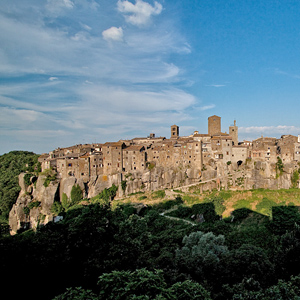
Festivals and celebrations in Vitorchiano
An unbreakable appointment for the first weekend in August is the Cavatello (a type of pasta) festival, held in the central square of the historic centre where long, fully-laden trestle tables are set up under the magnificent, medieval-style fountain. The Cavatello spaghetti are made with a mixture of salt, water and flour kneaded with the palms of the hands and seasoned according to an ancient recipé handed down from grandmother to grandmother: fresh tomato sauce with wild fennel. Under the bell-tower, every fourth Sunday of the month, the little square becomes alive with people thank to the antique and handicrafts fair, from 8.30 to around 20.00. Another place in Vitorchiano, not to be missed, is the Trappist nuns monastery, where they sell delicious, home-made jams, chocolate and honey. Also to be remembered is the varied production of liturgical objects (icons, images, prints). For well-being, fitness and relaxation lovers we advise a visit to the picturesque beauty-farm ‘Baldan’, located in the ancient monastery of the Poor Clare nuns.
Tuscia is an extremely ancient land, where nature and history in every epoch has generously laid the foundations for rendering absolutely unique a territory which, ranging over 50 kms around Viterbo (its natural, geographic centre) can legitimately boast of offering tourists inimitably interesting historic, cultural, natural, aeno-gastronomic and folkloristic proposals all year round, throughout its 60 small but stupendous townships. Lakes, the sea, sulphur and thermal baths, mountains and summer hills, and world-famous archeological sites. Furthermore when visiting our Country House you can easily make a trip to nearby Rome, without having to give up your serene, relaxing and restoring stay.
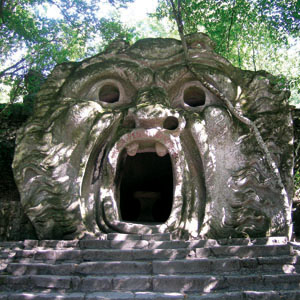
Bomarzo (6 Km)
Dominating the underlying Tiber valley, Bomarzo in its own small way offers a tourist proposal worthy of attention. The medieval hamlet located even higher than the road crossing the provincial highway, has a noteworthy panorama enhanced by a huge ‘palazzo’ built by the patrician Orsini family in 1525. The Palazzo now houses exhibitions and conventions. When the wars waged in the name of the Papal State came to an end Prince Vicino Orsini, another member of this powerful family, ordered the construction of the Sacred Wood, now known as the ‘Park of the Monsters’, an exhibition, the only one of it kind, exhibiting giant, fantastic and grotesque stone statues.
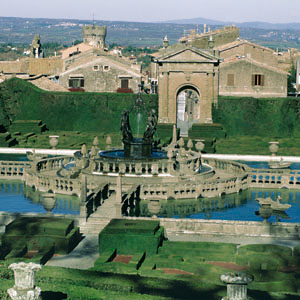
Bagnaia (3 Km)
This small village, belonging to the Viterbo area, has a classic, transit square offering a relaxing promenade through the characteristic alleys criss-crossing the ancient hamlet. Bagnaia was, however, the site chosen by Cardinal Ottavio Visconti for his superb renaissance Villa, built in the XVI century, embellished by Italianate gardens and scintillating waterworks. Completed in 1566 by Cardinal Giovan Francesco de Gambara who entrusted its the construction to Jacobo Barozzi, known as il Vignola, today it is a jewel in the crown among the numerous Italian monuments and gardens, to be found not only in the Tuscia area.
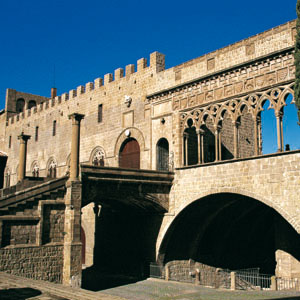
Viterbo (7 Km)
The principle township of the area, with 60,000 inhabitants, once a Papal seat and the commercial fulcrum of the entire province, Viterbo is famous for its marvellous medieval quarter, St. Pellegrino, its therapeutic sulphur baths, its Etruscan-Roman, archeological sites - Castel d’Asso and Ferento and also the magnificent Palazzo dei Papi. In the various museums (Civic Museum, National Museum, Ceramics Museum, Museum of the Sodalizio di St. Rosa and the Museum Colle del Duomo) centuries of fascinating history can be travelled while, thanks to the Univesità Agraria della Tuscia (Agrarian University), a splendid Botanical Garden located next to the Bulicame springs takes us from one continent to another, through beautiful environmental scenarios.
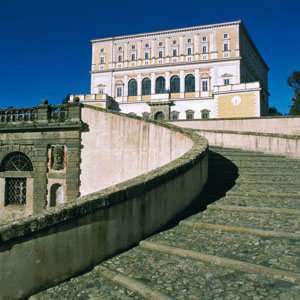
Caprarola (18 Km.)
Situated in the heart of the Mountain Municipality, Caprarola is celebrated for its sumptuous Palazzo Farnese, full of magnificently frescoed, noble halls and surrounded by princely gardens. Alessandro Farnese, who later became Pope Paul III, in 1539 entrusted the construction of the Palazzo to Antonio da Sangallo the Younger and Alessandro Farnese, his nephew, appointed Jacopo Barozzi, known as Il Vignola, to conclude the construction works. Caprarola is also the ideal terrain for cultivating hazel nuts and chestnuts, used by the chief, domestic, confectionary industry for top-notch products. The ancient village, with its genuine character and up-and-down alleys and inclines, definitely merits a delightful visit.
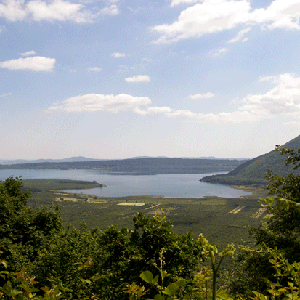
Lago di Vico (18 Km.)
Nestling in the heart of the natural Reserve of the Mountain Community of the Cimini Mountains, the Lago di Vico offers a relaxing reference point for those in search of the most genuine, uncontaminated nature, with a huge variety of birdlife finding their oasis in the lake, horses roaming free, hazel-nut groves, wide beaches and green glades where visitors can spend whole days far away from every noise and danger.
The volcanic eruptions which millions of years ago involved the volcanic network under the Vulsini mountains, due to the structural collapse of the surface which enclosed the magmatic halls under the various vulcanoes, led to the formation of the largest and most spectacular volcanic -born lake in Europe. Its millions of years has seen historic events harking back to the protovillanovian and villanovian periods (X-VIII-I centuries B.C.), ranging through the Etruscan (VIII-I centuries B.C.) and Roman eras up to the times of the sumptuous residences of popes and cardinals. Thanks to its limpid waters and the luxuriant and unspoiled nature which surrounds it, this area represents a diamond set in a territory, almost entirely still to be explored.
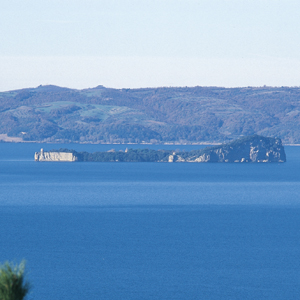
Lago di Bolsena
At an altitude of 305 metres above sea-level, the lake covers 114 square kms with a 43,175 km perimeter, a width of little more than 13 kms and a maximum depth of 151 ms. The surface temperature or ‘scilla’, ranges over the Seasons, between 25°C and 8°C, whereas at 130-140 ms deep it remains at a constant 8°C throughout the year. A natural oasis for migratory and non-migratory birds such as coots, tufted ducks, mallards, great-crested grebes, loons and seagull colonies, the Bolsena is also called the peasant lake because of the tilled fields all around it. Its abundant fish-life numbers various species including the extremely tasty whitefish, eels, pike, perch, trout and whitebait, a small fish typically used for frying. Environmentally fascinating, the Bolsena lake is rendered even more authentic by the cordial hospitality of its people, together with the opportunity to practise water sports or bask in the relaxing sun. Thanks to its public water transport, with landings both in Bolsena and Capodimonte, visitors can circumnavigate the lake and its islands with guided tours over the extraordinary Bisentina island, a natural, botanic garden bearing witness to its grandiose papal history under the Farnese family, counselled and assisted by their favourite architect and engineer Antonio da Sangallo.
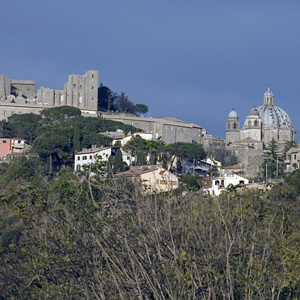
Montefiascone (25 Km)
This well-know tourist spot, situated at 640 ms above sea-level, offers to its visitors a breath-taking view stretching 360 degrees as far as the Tyrrenean sea, ranging over nearby Tuscany, the Appennines and Viterbo at the foot of the Cimini mountainSt. Famous for its home-grown wine Est! Est! Est! Montefiascone sets aside for this product, from 1-15 August a variety of festivals, all unique, with a wealth of typical folklore.
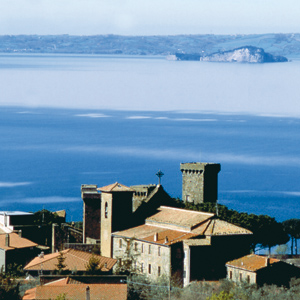
Bolsena (30 Km.)
Travelling on to the North, flanking the right bank of the lake, after 13 kms we reach Bolsena, celebrated for its Eucharistic Miracle. In this very place, in the year 1263, the miracle took place giving birth to the celebrations known in the entire Christian world as ‘Corpus Domini’. In the St. Cristina Basilica besides viewing the altar, where the miracle occurred and a fragment of the marble stained with the blood which dripped from the consecrated Host during the Mass, the visitor can also tour the impressive catacombs. The Etruscan origins of Bolsena also invite visits to other particularly beautiful and interesting sites, such as the Museum of the lake at the Castello Monaldeschi or the archeological digs in Poggio Moscini.
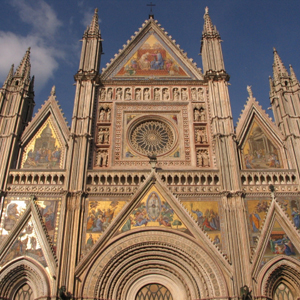
Orvieto (44 Km.)
Built for defence on a tufa cliff, also of volcanic origin, Orvieto offers visitors a welcoming historic centre geared up for tourism with is Majestic Orvieto cathedral whose mosaic facade stands out kms away while they travel along the road leading to the town. The Cathedral houses Relics and other fragments of the floor, blood-stained during the Eucharistic Miracle which took place in Bolsena in 1263. Another site of great tourist attraction is the ‘St. Patrick’s Well’ explorable to its maximum depth by means of a double, spiral stairway, illuminated by 72 windows (designed by Sangallo the Younger).
Shopping enthusiasts will find more than just interesting the hand-painted pottery or the D.O.C. wine and many other gastronomic specialities.
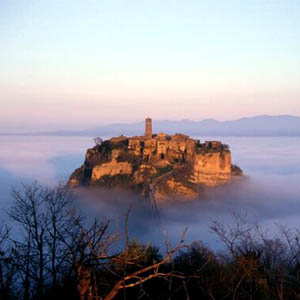
Civita di Bagnoregio (27 Km.)
Arriving from Orvieto, on the return journey, we come very close to another jewel of the Tuscia territory. A tufa cliff leaning over a valley surrounded by splendid white gullies, linked to the ordinary road network by a spectacular, modern bridge, passable only on foot with an sloping incline easily accessible to all. On reaching the cliff itself you enter a scenario taking you back in history. Despite restoration, ‘the dying city’, thus defined because of the few residents left (around 12), presents itself in a splendour totally dedicated to the numerous tourists who visit, with just two small bars, two tiny trattorie, an oil and wine tasting venue, a church and many, unique and picturesque scenes to gaze at and photograph.
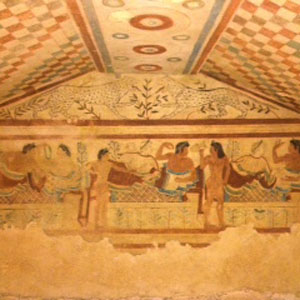
Tuscia’s origins are very ancient and find proof in archeological finds dating back to the protovillanovian and villanovian period (X-VIII centuries B.C.), passing through the Etruscans (VIII – I centuries B.C.), then forward to the ancient Romans and the middle ages which embellished our little towns with magnificent architecture. There are innumerable sites to be visited but when forced to choose how to advise our guests as to where to find the maximum evidence of the Etruscan culture, we would certainly suggest Tuscania, the ancient city of Vulci and the Castle-museum of La Badia, Tarquinia (the foremost centre with Etruscan tombs, some of them also painted) with the extremely well-provided Palazzo Vitelleschi Museum and, on the coast, the remains of the Etruscan port antica Gravisca - VI century B.C. Then Norchia, travelling forward along the return route, with its monumental Etruscan necropolis interred in the tufa rock with impressive architurectural magnificence.
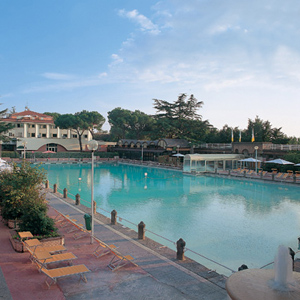
Thermal spas and Relaxation
A particularly privileged venue, located 10 minutes away from the Chiarluna Resort, is without doubt the well-known thermal complex of the Terme dei Papi Spa in Viterbo.
The presence in the Township of Viterbo of natural sulphur springs has encouraged the development of highly qualified thermal therapy spas also offering pure and simple and pleasant relaxation. Besides the great thermal swimming-pool the Spa also supplies beneficial health and beauty treatments for the face and body, a natural grotto, massages etc., also for short periods or weekends.